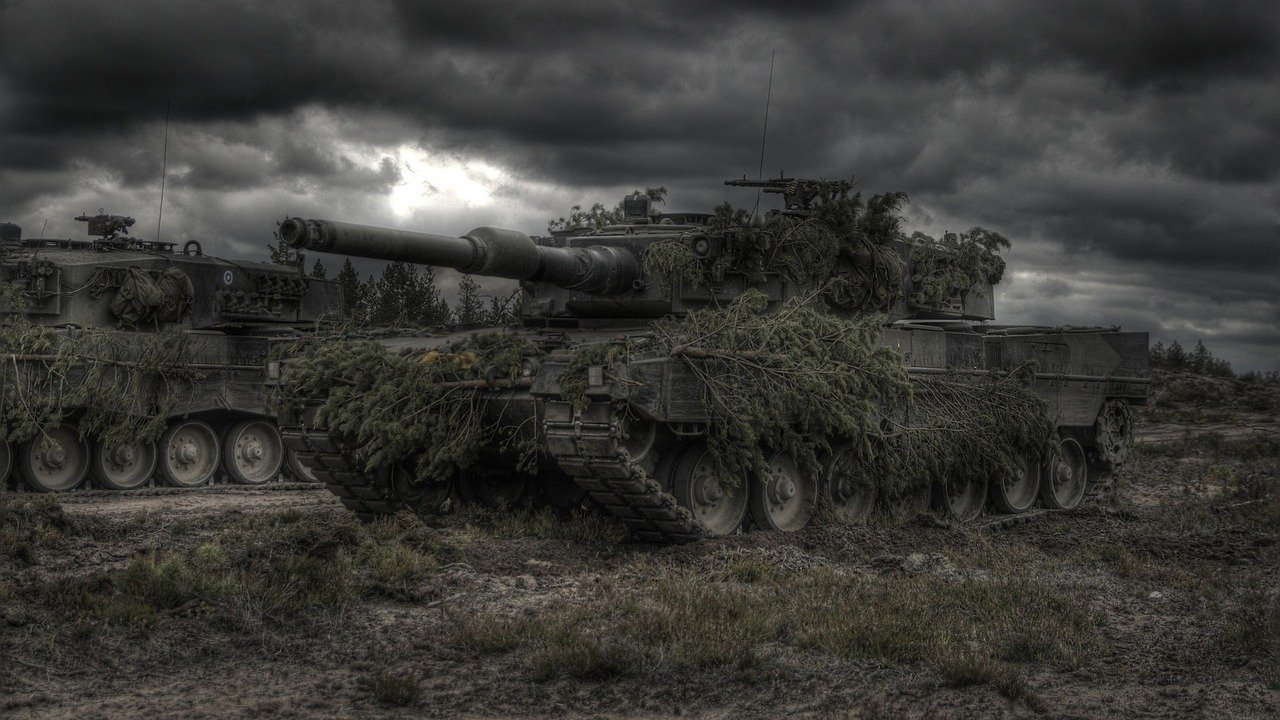You’re about to discover a game-changing approach to combatting opponents with longer reach. By incorporating advanced strategies, you’ll level the playing field and gain the upper hand in any fight. Whether you’re a professional fighter or just someone looking to defend themselves, these techniques will empower you to overcome the challenges posed by opponents with longer arms. Get ready to revolutionize your fighting style and leave your adversaries in awe of your skills.

Understanding the Importance of Reach in Combat
The significance of reach in combat
Reach refers to the distance between you and your opponent when engaging in combat. It plays a vital role in determining the effectiveness of your strikes and the strategies you employ. Understanding the importance of reach is crucial as it can greatly impact the outcome of a fight.
How reach affects fighting strategies
The length of your reach affects the fighting strategies you can employ. If you have a longer reach than your opponent, you have the advantage of being able to strike from a safer distance, keeping them at bay. On the other hand, if your opponent has a longer reach, you need to adjust your tactics accordingly to overcome this disadvantage.
Advantages and disadvantages of longer reach
Having a longer reach provides several advantages in combat. It allows you to strike from a distance, increasing your chances of landing powerful hits while keeping your opponent at a disadvantage. However, longer reach also has its downsides. It can make it more challenging to defend against opponents who are skilled at closing the distance, and it may limit your ability to effectively target specific areas of your opponent’s body.
Analyzing Your Opponent’s Reach
Measuring your opponent’s reach
Before engaging in combat with an opponent, it is crucial to measure their reach. This can be done by observing their arm span and comparing it to your own. Understanding their reach will help you anticipate their attacks and devise strategies to counter their advantages.
Observing their fighting style
Another way to analyze your opponent’s reach is by observing their fighting style. Do they rely more on strikes from a distance or close-quarters combat? By understanding their preferred techniques, you can determine how their reach affects their overall strategy and plan accordingly.
Identifying their preferred attack range
Every fighter has their own comfort zone when it comes to attack range. Some may prefer to strike from a distance, while others may excel in close-quarters combat. By identifying your opponent’s preferred attack range, you can adjust your strategy to either avoid engaging in their preferred range or find ways to neutralize their advantage.
Developing an Effective Game Plan
Assessing your own strengths and weaknesses
To develop an effective game plan, it is crucial to assess your own strengths and weaknesses, especially in relation to your opponent’s reach advantage. Are you faster, more agile, or possess better defensive skills? Understanding your strengths will help you leverage them while compensating for your reach disadvantage.
Identifying strategies to neutralize reach advantage
Once you have assessed your opponent’s reach and identified your own strengths, it’s time to devise strategies to neutralize their advantage. This could involve using footwork to close the distance, utilizing grappling techniques to nullify their reach, or working on counter-attack strategies to exploit their defensive vulnerabilities.
Creating a game plan based on analysis
With all the information gathered, it’s time to create a comprehensive game plan. Your game plan should include specific tactics to counter your opponent’s reach advantage while maximizing your own strengths. By mapping out a plan, you’ll be better prepared to handle different scenarios that may arise during the fight.
Closing the Distance
Strategies to get inside your opponent’s reach
Closing the distance is key to reducing the impact of your opponent’s longer reach. Strategies such as darting in and out of range, utilizing quick footwork to create angles, and initiating aggressive forward movement can help you get inside their reach and unleash your own attacks.
Feints and footwork techniques
Feints and footwork techniques are invaluable tools when it comes to closing the distance against an opponent with longer reach. By feinting and making them react, you can create openings and exploit their anticipation, allowing you to move in closer and effectively launch your own strikes.
Attacking their weak spots
Once you close the distance, it’s important to focus your attacks on your opponent’s weak spots. Areas such as the body or sides of the head may be more vulnerable to strikes. Targeting these areas can significantly impact your opponent’s ability to effectively use their reach advantage.

Utilizing Clinch and Grappling Techniques
Understanding the importance of close-quarters combat
Close-quarters combat becomes crucial when facing an opponent with longer reach. By engaging in clinch and grappling techniques, you can effectively nullify their reach advantage and control the fight in confined spaces where their longer reach becomes less effective.
Learning effective clinching and grappling techniques
To effectively utilize clinch and grappling techniques, it’s important to spend time learning and practicing these skills. Techniques such as pummeling, hip throws, and various submission holds can allow you to control your opponent and negate their reach advantage.
Using leverage and body positioning to negate reach advantage
In clinch and grappling situations, leverage and body positioning are key. By understanding how to position yourself and utilize leverage, you can effectively neutralize your opponent’s longer reach. By focusing on controlling their limbs and destabilizing their base, you can render their reach advantage useless.
Defensive Techniques to Handle Longer Reach
Blocking and parrying techniques
When faced with an opponent with longer reach, effective blocking and parrying techniques are essential. Properly timed blocks and parries can disrupt the effectiveness of their strikes, minimizing the impact of their longer reach and setting up counter-attacking opportunities.
Slipping and dodging punches
Slipping and dodging punches are defensive techniques that allow you to avoid direct hits from your opponent. By slipping punches to the side or ducking under them, you can nullify their reach advantage and position yourself for counter-attacks.
Creating angles to avoid direct hits
Creating angles during combat is an effective defensive strategy against opponents with longer reach. By moving laterally and changing your angle of attack, you can make it more challenging for your opponent to land clean hits. This tactic can frustrate them and open up opportunities for you to strike back.

Counter-Attack Strategies
Identifying openings in your opponent’s defense
As you become familiar with your opponent’s techniques and style, you’ll start to identify openings in their defense. It could be a slight hesitation, a dropped guard, or a predictable pattern of movement. By spotting these openings, you can capitalize on them with well-timed and accurate counter-attacks.
Timing and accuracy in counters
Counter-attacks rely heavily on timing and accuracy. Being able to anticipate your opponent’s strikes and quickly respond with precise counter-attacks can be a game-changer. Practice timing drills and hone your accuracy to make the most of counter-attack opportunities.
Using speed and agility to your advantage
If you’re facing an opponent with longer reach, it’s essential to utilize your speed and agility. Quick footwork, swift transitions, and explosive movements can help you close the distance rapidly and catch your opponent off guard. By using your speed to your advantage, you can neutralize their reach advantage and gain the upper hand.
Working on Accuracy and Precision
Improving your punching and kicking accuracy
To maximize the impact of your strikes when facing an opponent with longer reach, it’s crucial to work on accuracy and precision. Training drills that focus on hitting specific targets, such as punching bags or pads, can help you develop the muscle memory necessary for precise strikes.
Targeting specific areas to maximize impact
Identifying specific target areas can enhance the effectiveness of your strikes. Aim for vulnerable spots such as the chin, liver, or solar plexus to maximize the impact. By pinpointing these areas and executing well-placed strikes, you can overcome your opponent’s reach advantage and increase your chances of success.
Developing power in close quarters
When fighting in close quarters against an opponent with longer reach, developing power becomes essential. Focus on building strength in your strikes, especially when at close range. Strengthening your punches and kicks will compensate for the potential decrease in power caused by the shorter distance.
Mental Approaches to Overcome Reach Disadvantage
Building confidence and maintaining composure
Having the right mindset is crucial when facing an opponent with longer reach. Building confidence in your abilities and maintaining composure in the face of adversity will allow you to overcome the reach disadvantage. Believe in your training and focus on executing your game plan with precision.
Adapting to changing situations
Combat situations are constantly evolving, and being able to adapt is key to overcoming a reach disadvantage. Flexibility and the ability to adjust your strategies on the fly will allow you to stay competitive and find ways to overcome your opponent’s reach advantage.
Staying patient and disciplined
Patience and discipline are vital when facing an opponent with longer reach. It can be tempting to rush in or become frustrated when attacks don’t land, but maintaining composure and sticking to your game plan will yield better results. Stay patient, wait for the right opportunities, and capitalize on them when they present themselves.
Training Drills to Enhance Skills
Specific drills for improving footwork
Footwork is crucial when dealing with opponents who have a longer reach. Incorporate drills that focus on agility, lateral movement, and swift transitions to enhance your footwork abilities. Practice pivoting, stepping in and out of range, and maintaining a balanced stance to effectively close the distance.
Partner exercises for counter-attacks
Working with a partner allows you to simulate real combat scenarios and practice counter-attacks against opponents with longer reach. Engage in partner exercises that involve simulating attacks and responding with well-timed counter-attacks. This will improve your timing, accuracy, and ability to exploit openings.
Simulating longer reach scenarios
To prepare for fighting opponents with longer reach, incorporate training drills that simulate such scenarios. Use training tools like reach-specific striking pads and sparring partners with longer reach to simulate real combat situations. By training against opponents with longer reach, you’ll become more adept at handling and overcoming their advantages.
By understanding the importance of reach in combat, analyzing your opponent’s reach, developing an effective game plan, closing the distance, utilizing clinch and grappling techniques, employing defensive techniques, implementing counter-attacks, working on accuracy and precision, adopting strong mental approaches, and incorporating relevant training drills, you’ll be better equipped to face opponents with longer reach. Remember, it’s not just about physical attributes – intelligence, strategy, and adaptability play a crucial role in overcoming any disadvantage. Stay confident, stay focused, and keep honing your skills to prevail in combat.

